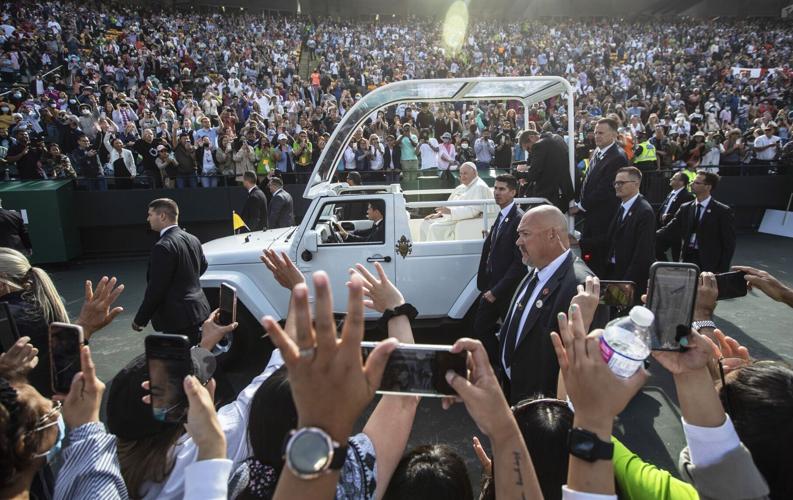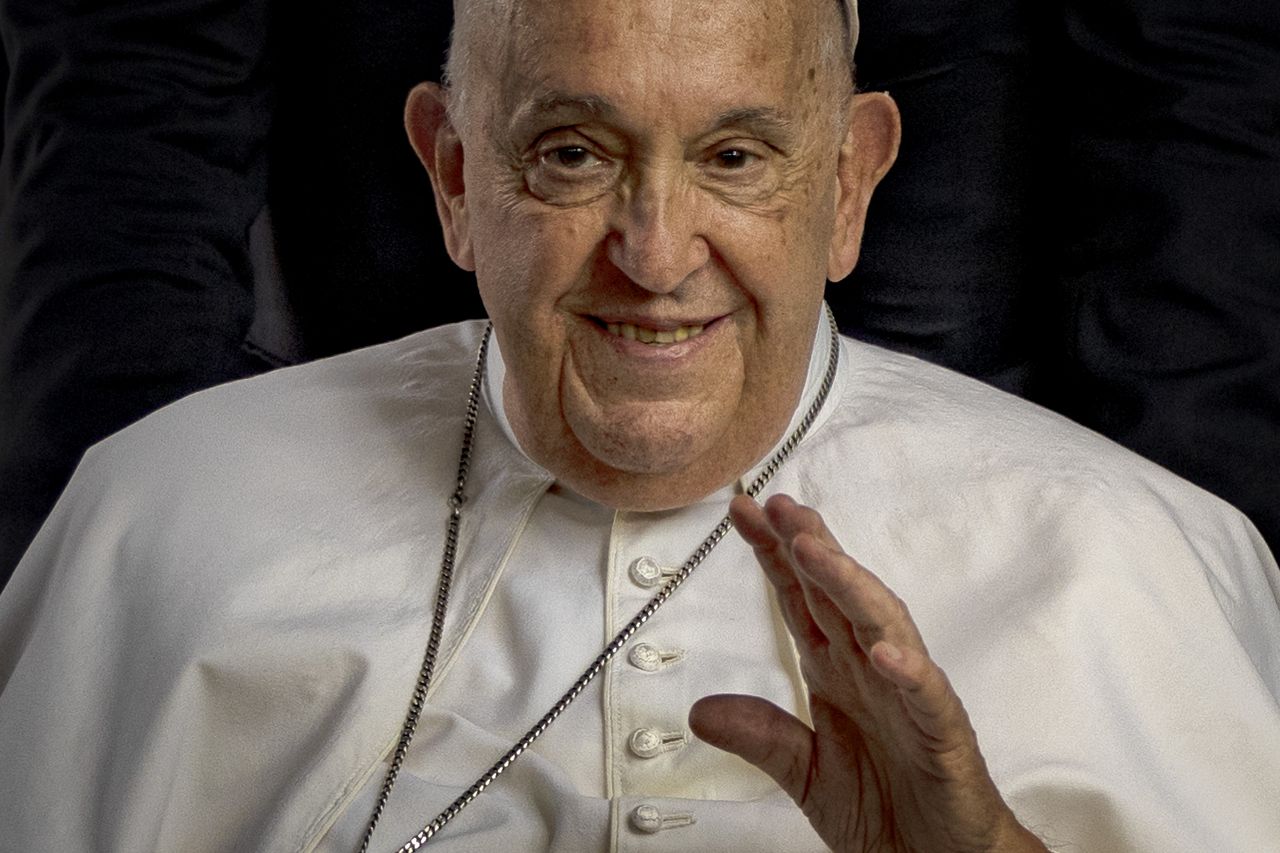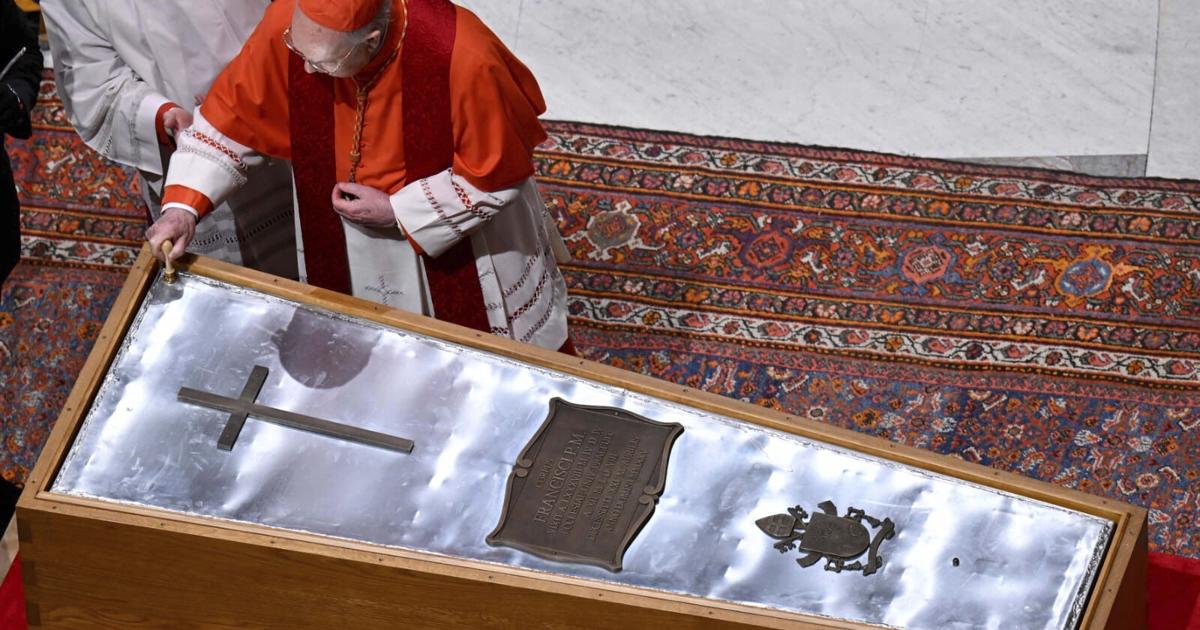Does the attire of a spiritual leader truly speak volumes, revealing a deeper understanding of their values and their connection to the world? The sartorial choices of Pope Francis, particularly his embrace of simplicity, have sparked intense discussion, offering a window into his papacy and the broader shifts within the Catholic Church.
Fashion, as a potent form of communication, transcends mere aesthetics, conveying a multitude of messages about an individual or an organization. The Pope's style, distinct from the everyday, is a compelling case study in how clothing can shape perceptions and influence narratives. From the moment he was elected in 2013, Pope Francis's clothing choices set him apart, offering a stark contrast to the more elaborate vestments favored by some of his predecessors. This deliberate shift was immediately noted by commentators, signaling a conscious effort to redefine the papacy in a more humble and approachable light. His choice to eschew the traditional embellishments, embracing functionality and simplicity, signaled a departure from the opulent traditions of the past.
| Attribute | Details |
|---|---|
| Full Name | Jorge Mario Bergoglio |
| Born | December 17, 1936, in Buenos Aires, Argentina |
| Education | Master's degree in Chemistry from the University of Buenos Aires; Philosophy and Theology studies. |
| Religious Order | Society of Jesus (Jesuits) |
| Ordained as Priest | December 13, 1969 |
| Ordained as Bishop | June 27, 1992 |
| Archbishop of Buenos Aires | 1998 2013 |
| Created Cardinal | February 21, 2001, by Pope John Paul II |
| Elected Pope | March 13, 2013 |
| Key Initiatives | Emphasis on social justice, concern for the poor, environmental advocacy, and reform of the Roman Curia. |
| Style of Papacy | Known for simplicity, humility, and a focus on pastoral care. |
| Reference Website | Vatican.va |
Pope Francis, being the first Jesuit pope, has brought a unique perspective to the papacy, with priorities that often differ from his predecessors. As a Jesuit, his background in the Society of Jesus, known for its emphasis on studying languages and philosophy, likely influences his approach to theological and pastoral matters. This background, coupled with his Franciscan leanings, has shaped his distinctive approach to dress and appearance. This convergence is a potent influence on the visual aspects of his pontificate.
The recent funeral and burial of Pope Francis, which took place on Saturday, April 26, 2025, at the Basilica of Saint Mary Major, brought the world's attention to the intricate symbolism associated with his final attire. The late pontiff's body was dressed in ecclesiastical vestments, each garment imbued with deep religious significance. This included specific articles of clothing that have long held symbolic importance within the Catholic Church. This procession served as a poignant reminder of the man behind the iconic robes and the powerful messages conveyed through his sartorial choices.
The red mantle, for example, is not an imperial symbol, but a reference to the martyrdom of Christ, its color symbolizing the ultimate sacrifice. The white cassock, on the other hand, signifies purity and the presence of Christ, representing his innocence and his divine nature. The simplicity of the white cassock, the standard attire for popes, is itself a statement, especially when contrasted with the more elaborate garments that could be worn. The historical evolution of this practice is worth noting. The tradition of popes wearing white seems to have developed organically over time, and it highlights the practical and symbolic elements of papal clothing.
Beyond the primary vestments, the pope's burial included other, more esoteric items. A bag of coins, one for each year of his papacy, was a symbol of his time as pontiff. These coins are not specially minted for a funeral; rather, each pope commissions a new series upon taking office. The presence of these personal items, along with their significance, reinforces the visual narrative around the individual's legacy.
The simplicity embraced by Pope Francis is a consistent theme. While some past popes have favored garments embellished with gold and jewels, Francis has consistently chosen to keep it simple. According to his tailors, he prefers simple fabrics like cotton and wool, and his clothing is designed for comfort and ease of movement. He's known to wear the same white cassock he wore as a cardinal in Argentina. This practical, unfussy approach contrasts sharply with the ornate styles of some previous popes, making his clothing choices a clear visual representation of his values.
This deliberate simplicity also underscores the core of his papacy: concern for the poor and a distrust of ostentation. By rejecting elaborate embellishments, Francis aligns himself with a message of humility, emphasizing the importance of spiritual values over material ones. This sartorial choice has been a conscious decision that has resonated with many people, particularly in an era where transparency and authenticity are highly valued. His choices have been read as a visual shorthand reflecting the values of his papacy, which include a focus on simplicity, pastoral care, and outreach to the marginalized.
When Pope Francis entered the papal conclave wearing the scarlet red of a cardinal, it underscored the transition into the papacy. The emergence in gleaming white was a symbolic transformation, signifying his acceptance of the role. The pope's clothing choices, from the moment of his election to the present day, have played a critical role in communicating his values and guiding the narrative of his papacy.
The visual elements, including clothing, are crucial in shaping perceptions, with meaning that changes throughout history. Pope Francis's choice to wear the same clothing as he did as a cardinal is a deliberate rejection of the past grandeur, a statement of humility.
The role of the uniform for Pope Francis's brand identity in his public introduction after the 2013 papal conclave has helped to create a new message in the church. The message is shaped by his unique approach to the churchs institutional uniform. The rejection of elaborate vestments, the preference for simple fabrics, and the conscious adoption of a less formal style represent a profound shift in how the papacy is perceived.
The funeral procession of Pope Francis, on April 26, 2025, provided a final, poignant illustration of this carefully curated image. The ecclesiastical vestments, the simple white cassock, and the subtle symbols on his body all served as a visual testament to his life and the values he embraced. The location of his burial, the Basilica of Saint Mary Major in Rome, which was his final resting place, further reinforced the message. This choice, away from St. Peter's Basilica, where many popes are buried, and the inclusion of a simple request in his will for burial "in the earth, without particular decoration," underscored his commitment to humility.
His fashion statement about priestly garments is an aspect that has generated substantial debate within the church. The call for simplicity from this reformist Holy See has added to the existing divisions.
The significance of Pope Francis' clothing goes beyond the superficial; it is a key component in conveying the tone and narrative of his papacy. His choices, therefore, are a vital aspect of his overall mission. The worlds continued mourning for Pope Francis, coupled with the interest in his life and legacy, underscores the power of his approach to fashion, the man behind the iconic robes, and the profound message he conveyed. The details of his appearance, his simplicity, and his embrace of certain traditions combine to shape the perception of the Catholic Church. The simplicity and functionality of his clothing choices also speak to a broader concern: a focus on simplicity. The pope's attire is not merely about aesthetics; it is an integral element of his identity and a key factor in shaping the narrative of his papacy.


